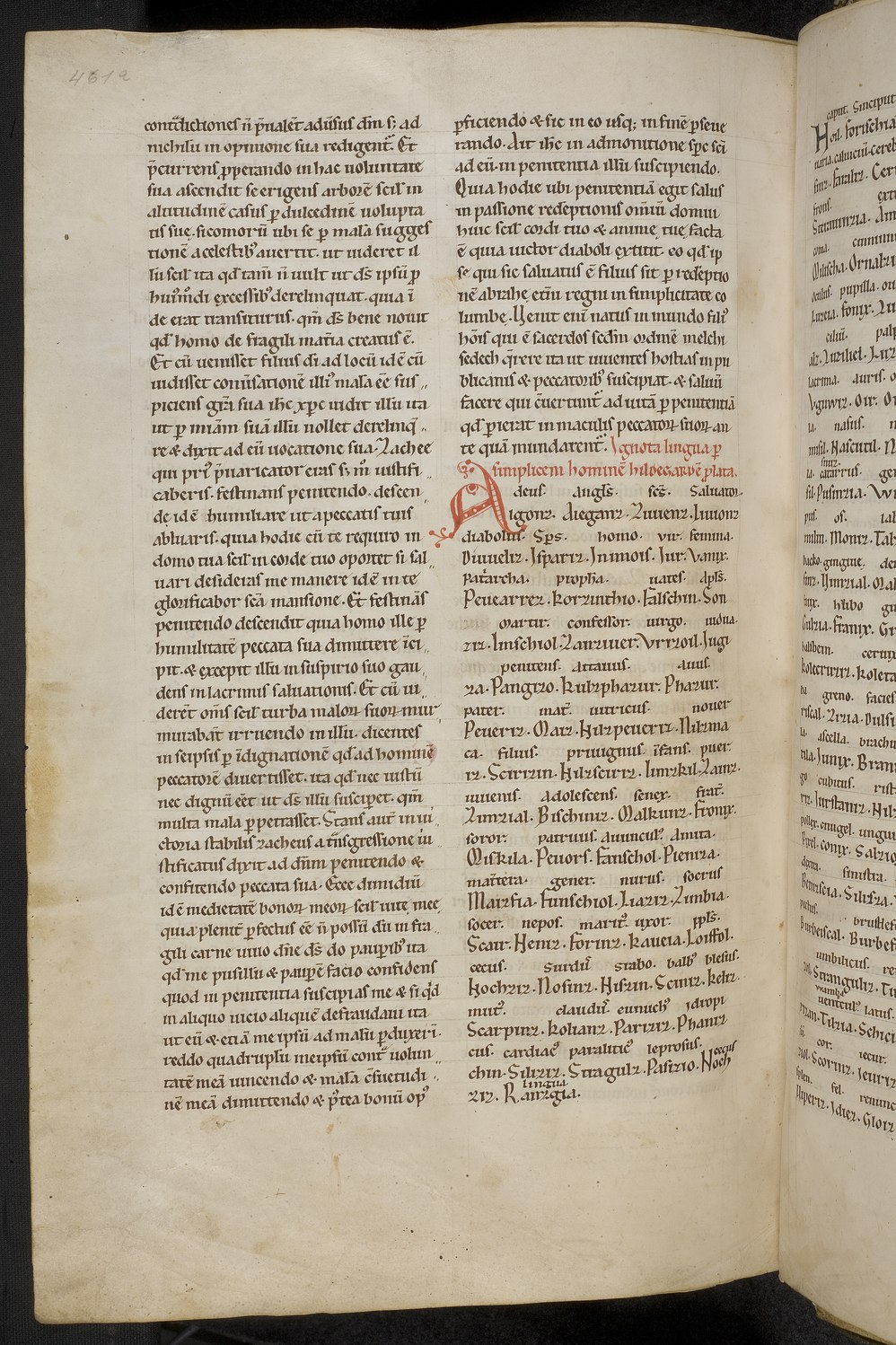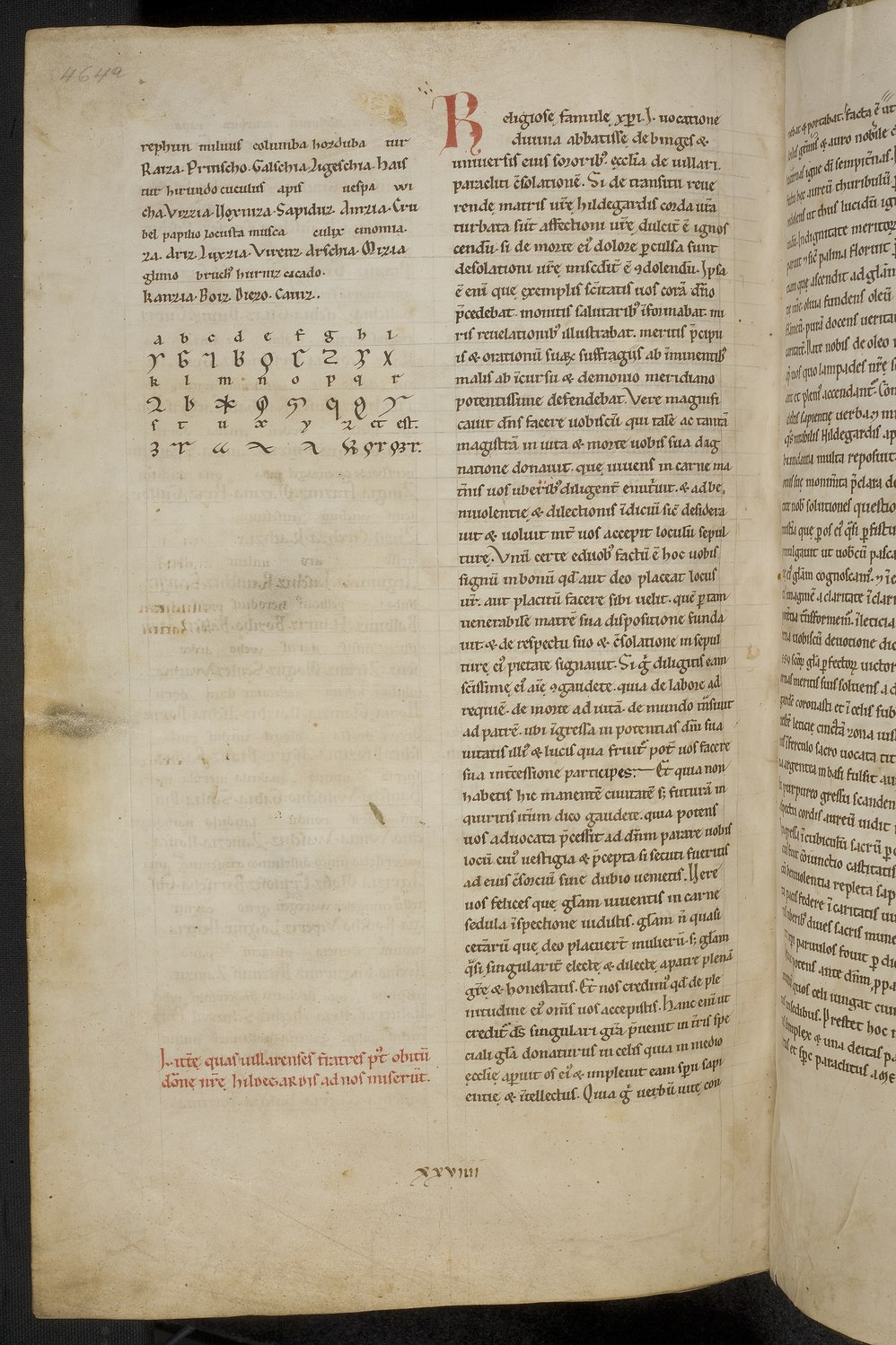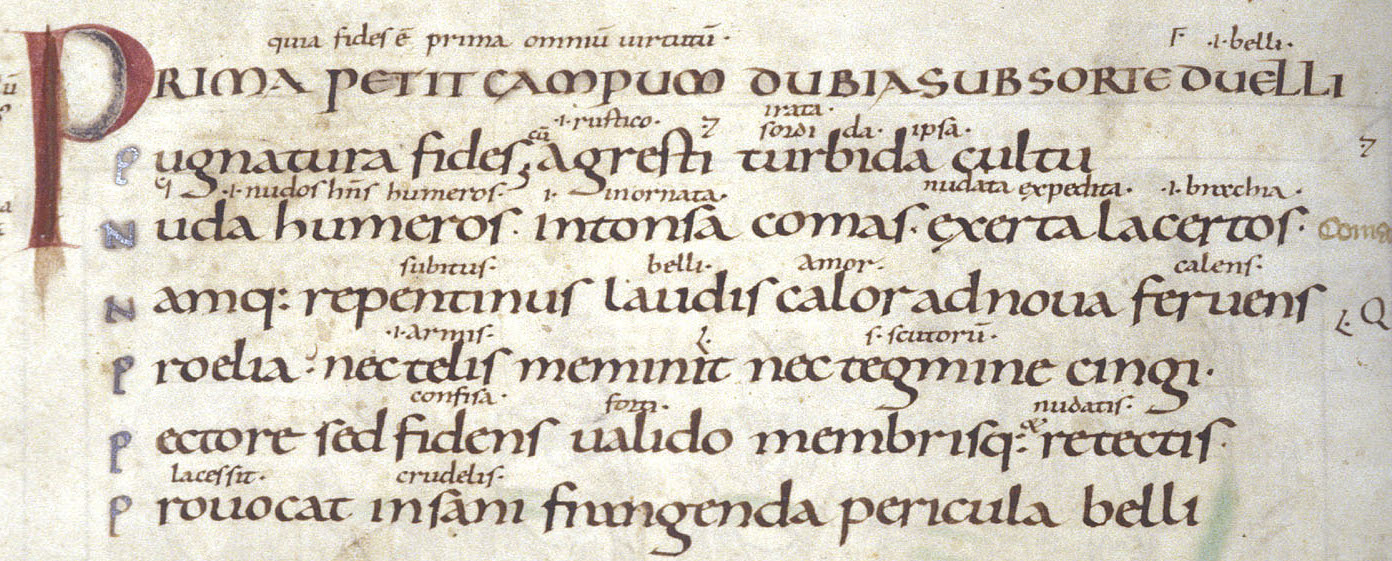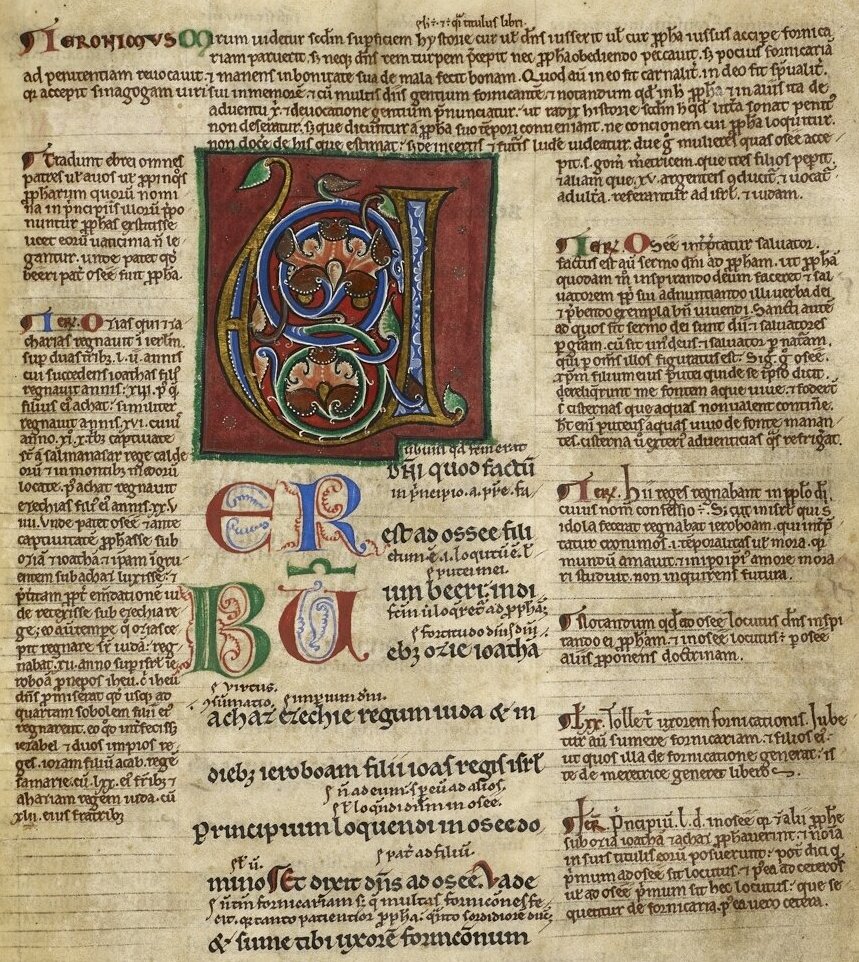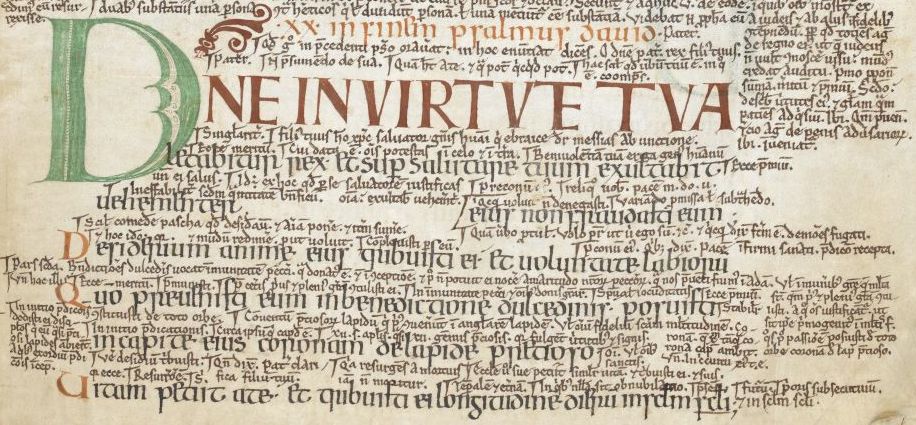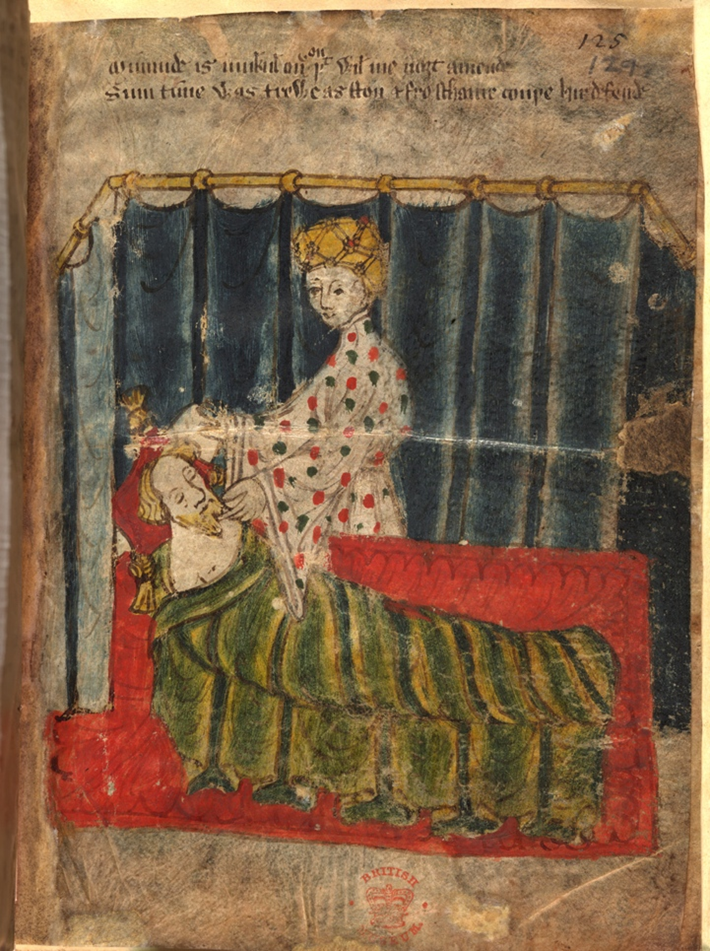
British Library Cotton Nero A.x, f. 125r/129r; © The British Library
New scientific analysis may completely change our understanding of one of the most famous manuscripts for students of Middle English literature. British Library Cotton Nero A.x is the sole extant manuscript of the works of the so-called Gawain-poet, the anonymous author of Pearl, Cleanness, Patience, and Sir Gawain and the Green Knight. These jewels of the Alliterative Revival are today some of the best-known medieval English works, but we would not have them at all if they did not survive in this single late fourteenth-century manuscript. Even better for students of Middle English literature is that this manuscript is illustrated, including scenes from all four texts. For years, scholars have offered only a poor critical assessment of the pictures, an assessment that a few more recent scholars have begun to reexamine. Are these really the crudely executed illustrations of an amateur artist?
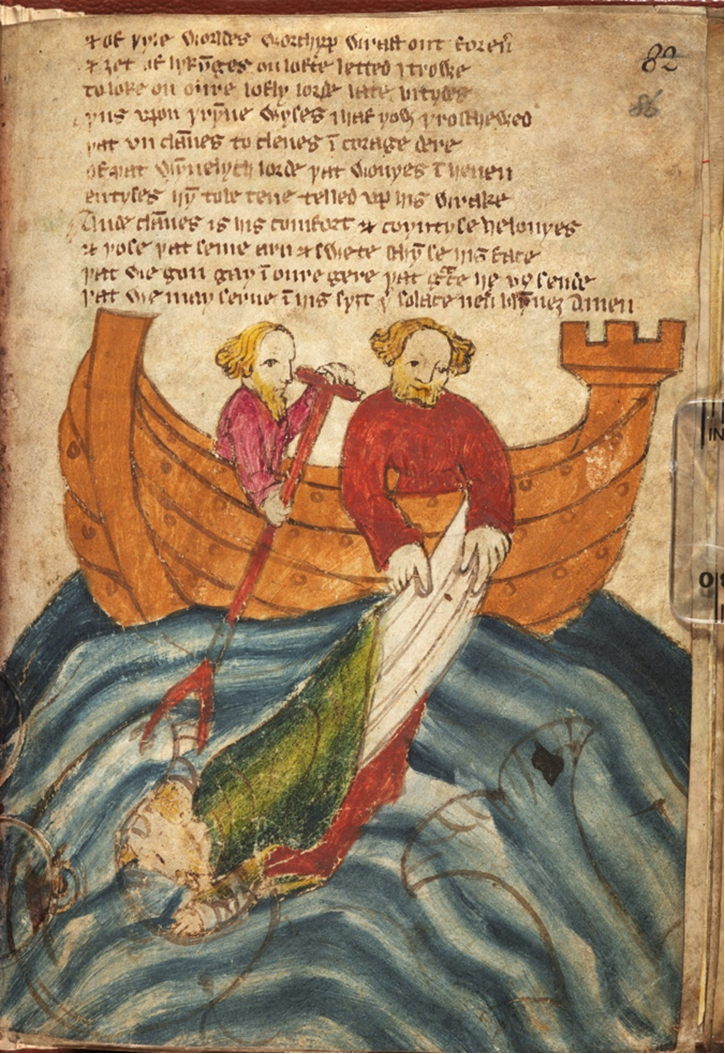
British Library Cotton Nero A.x (art. 3), f. 82r/86r © The British Library
New discoveries, based on analysis of the pigments and ink, may change our understanding of the part these illustrations may have played in the original production of the manuscript. Maidie Hilmo, of the University of Victoria, has studied these illustrations extensively, most recently in a new overview of the pictures that she has written for eventual publication on the Cotton Nero A.x. Project, an international initiative of the University of Calgary to make digital images, transcriptions, and critical editions of the manuscript more widely available. She requested a scientific analysis of the pigments, and one of the most striking results is that the same iron gall ink was used for both the text and the underdrawings of the images, as Paul Garside, the Senior Conservation Scientist at the British Library, has indicated. Is it possible this may mean the illustrations, or at least the underdrawings, were drawn around the same time the manuscript was originally written, possibly even by the scribe? There is no smoking gun, but it is true that iron gall ink was not what illuminators ordinarily used for their drawings – this ink was far more typically the medium of scribes, rather than manuscript artists, as indicated by Mark Clarke, an internationally acknowledged expert on medieval pigments.
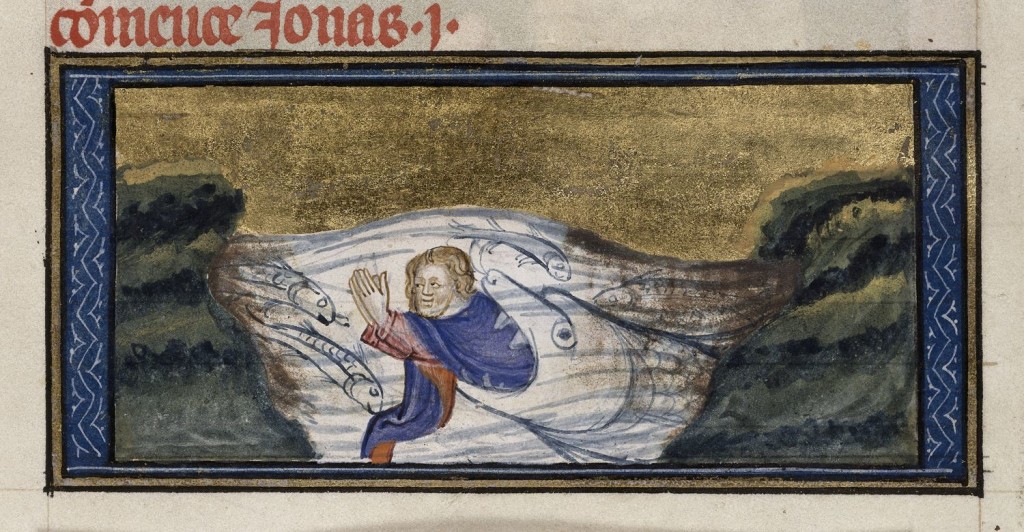
British Library Royal MS 19 D.ii, f. 395r
Traditionally, there has been a great deal of debate surrounding the relative timeframe of the copying of the manuscript’s text and the drawing and painting (not necessarily the same thing!) of the illustrations. Many earlier efforts at dating the illustrations suggested that they were made around 1400-1420, potentially some decades after the 1375-1400 copying of the text.1 This new analysis suggests such dating of the pictures may be off, and invites future scholars to reassess the dating of the various components of the illustrations in relation to the text. Hilmo considers Jennifer Lee’s argument that the heavy-handed painting may have been done by another hand, different from the artist of the underdrawings.2
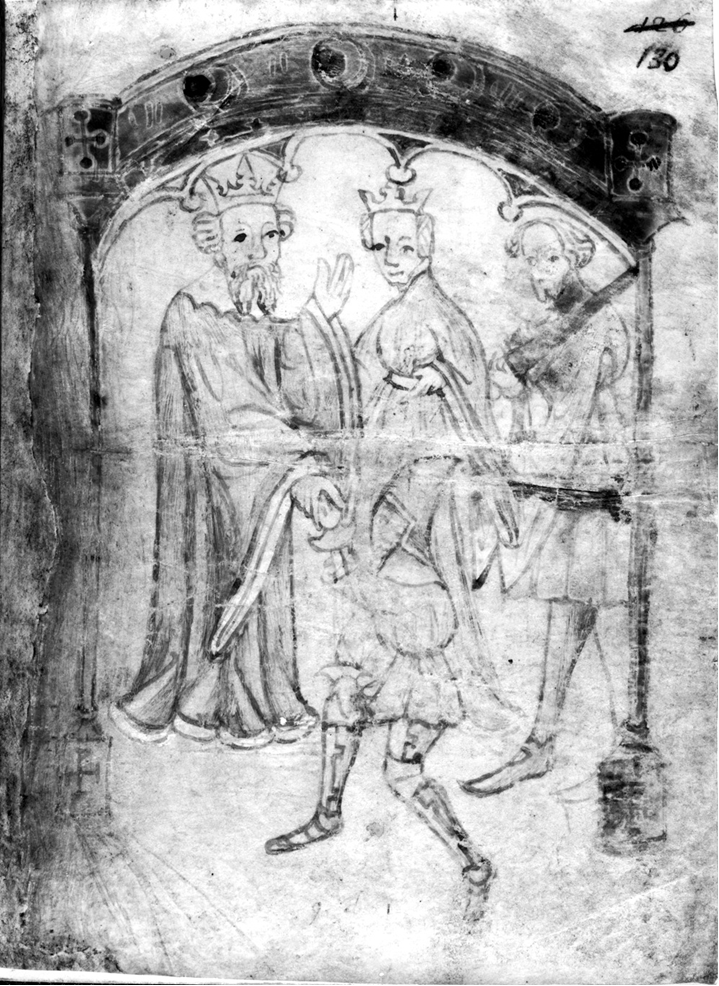
British Library Cotton Nero A.x (art. 3), f. 126r/130r © The British Library
Hilmo invites the meditative reader to reconsider the function of the miniatures not only in illustrating individual poems but also in linking all four poems into a cohesive narrative reshaping and unifying them “into a larger interpretive, typological and iconographic framework.” Whether or not a thoughtful scribe was involved in this visual reconceptualization of the poems as a whole, this study encourages us to see fresh meanings in our successive encounters with Cotton Nero A.x.
For the full explanation of this new research, explore Hilmo’s overview and a draft of the complete article now available on the Chequered Board (she encourages responses).
Nicole Eddy
Medieval Institute
University of Notre Dame
1. See A. I. Doyle, “The Manuscripts,” in Middle English Alliterative Poetry and Its Literary Background: Seven Essays, ed. David Lawton (Cambridge: D. S. Brewer, 1982), 88–100; Sarah Horrall, “Notes on British Library, MS Cotton Nero A X,” Manuscripta 30 (1986): 191–98.
2. Jennifer A. Lee, “The Illuminating Critic: The Illustrator of Cotton Nero A.X,” Studies in Iconography 3 (1977): 17–45.

